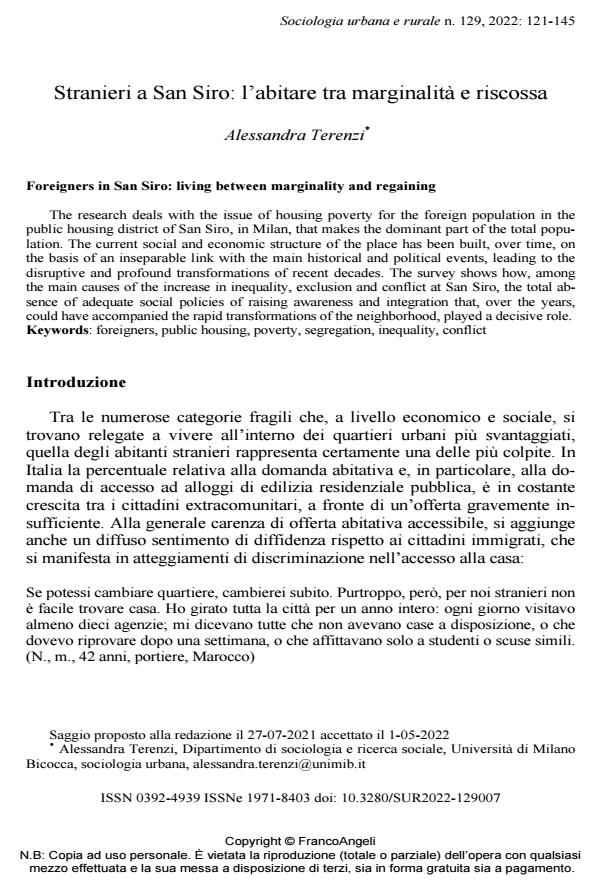Stranieri a San Siro: l’abitare tra marginalità e riscossa
Titolo Rivista SOCIOLOGIA URBANA E RURALE
Autori/Curatori Alessandra Terenzi
Anno di pubblicazione 2022 Fascicolo 2022/129
Lingua Italiano Numero pagine 25 P. 121-145 Dimensione file 307 KB
DOI 10.3280/SUR2022-129007
Il DOI è il codice a barre della proprietà intellettuale: per saperne di più
clicca qui
Qui sotto puoi vedere in anteprima la prima pagina di questo articolo.
Se questo articolo ti interessa, lo puoi acquistare (e scaricare in formato pdf) seguendo le facili indicazioni per acquistare il download credit. Acquista Download Credits per scaricare questo Articolo in formato PDF

FrancoAngeli è membro della Publishers International Linking Association, Inc (PILA)associazione indipendente e non profit per facilitare (attraverso i servizi tecnologici implementati da CrossRef.org) l’accesso degli studiosi ai contenuti digitali nelle pubblicazioni professionali e scientifiche
The research deals with the issue of housing poverty for the foreign population in the pub-lic housing district of San Siro, in Milan, that makes the dominant part of the total population. The current social and economic structure of the place has been built, over time, on the basis of an inseparable link with the main historical and political events, leading to the disruptive and profound transformations of recent decades. The survey shows how, among the main causes of the increase in inequality, exclusion and conflict at San Siro, the total absence of adequate social policies of raising awareness and integration that, over the years, could have accompa-nied the rapid transformations of the neighborhood, played a decisive role.
Parole chiave:foreigners, public housing, poverty, segregation, inequality, conflict
Alessandra Terenzi, Stranieri a San Siro: l’abitare tra marginalità e riscossa in "SOCIOLOGIA URBANA E RURALE" 129/2022, pp 121-145, DOI: 10.3280/SUR2022-129007